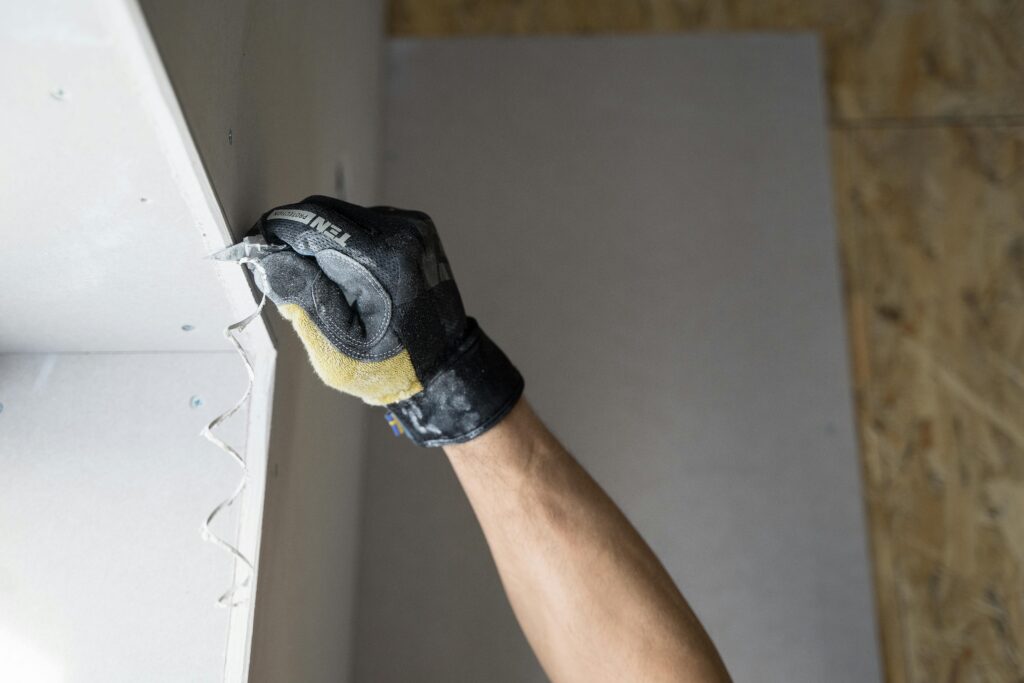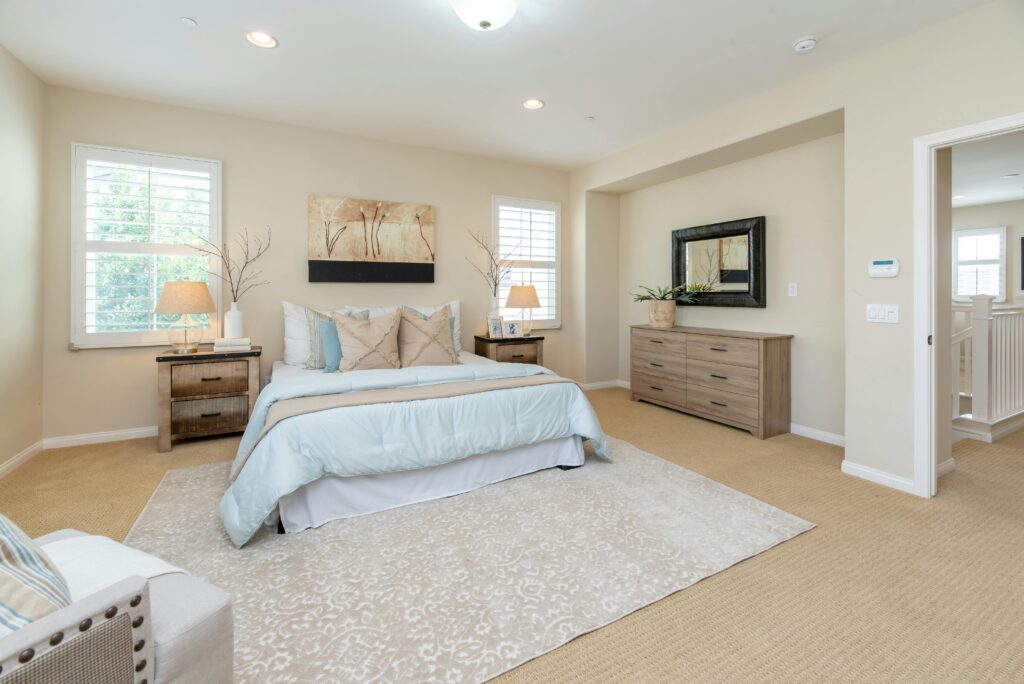Expanding a room is a strategic way to increase your home’s living space, enhance functionality, and boost property value. Whether you need additional square footage for a growing family, a home office, or a luxury suite, a well-planned room expansion ensures efficiency, comfort, and aesthetic appeal. However, such projects require careful planning, budgeting, and execution to avoid costly mistakes.
In this guide, we will outline the essential steps for a successful room expansion, covering everything from planning and permits to material selection and final touches. Whether you’re looking to extend a bedroom, enlarge a living area, or add a new workspace, these steps will help you achieve a seamless expansion.
Table of Contents
ToggleKey Takeaways
- Proper planning and budgeting are essential for a smooth room expansion process.
- Understanding building codes and securing permits prevent legal issues and delays.
- Hiring qualified professionals ensures high-quality craftsmanship and efficient execution.
- Selecting durable materials enhances the longevity and aesthetic appeal of the new space.
- Smart design choices, such as natural lighting and storage solutions, maximize functionality.
Expanding a room is a complex process that involves structural modifications, space optimization, and aesthetic enhancements. Homeowners should consider the impact on existing infrastructure, ensuring that the new addition blends harmoniously with the rest of the house. Proper planning also includes evaluating energy efficiency, natural lighting, and ventilation to create a comfortable and sustainable living space. A well-executed expansion not only improves quality of life but also increases property value, making it a worthwhile investment for both current enjoyment and future resale potential.
Step 1: Define Your Goals and Needs
Before starting a room expansion, determine why you need more space. Are you creating an extra bedroom, expanding a kitchen, or adding a home office? Identifying the purpose of the expansion helps shape design decisions and ensures the new space meets your lifestyle needs. Additionally, consider how this change will affect the overall flow of your home and whether it aligns with your long-term goals. A well-planned expansion should enhance functionality, complement the existing structure, and improve energy efficiency. Taking the time to assess both practical and aesthetic considerations will lead to a more successful and seamless integration of the new space.
Consider factors such as:
- The intended use of the additional space.
- The functionality and flow between the existing and expanded areas.
- The impact on your home’s overall layout and property value.
- Potential zoning restrictions that could affect your project.
Step 2: Set a Realistic Budget
A well-defined budget prevents unexpected costs and ensures a financially feasible project. Start by assessing your financial capacity and obtaining cost estimates from multiple contractors. Factor in potential delays and unexpected expenses, such as hidden structural issues or price fluctuations in materials. Having a well-structured budget not only keeps your project on track but also helps prioritize essential features over aesthetic enhancements. Account for expenses such as:
- Architectural and design fees.
- Construction materials and labor costs.
- Permit and inspection fees.
- Utility modifications (electrical, plumbing, HVAC adjustments).
- Interior finishes and furniture.
- Contingency funds (typically 10-20% of the budget for unexpected issues).
Step 3: Obtain Permits and Understand Local Regulations
Before construction begins, check with local authorities regarding permits and zoning laws. Each municipality has specific requirements, so it’s crucial to understand local building codes and regulations. Consulting with a contractor or architect can help navigate the permitting process. Most room expansions require permits for:
- Structural modifications.
- Electrical and plumbing work.
- HVAC system extensions.
- Exterior changes (roofline alterations, additional windows, etc.).
Failing to secure proper permits can lead to fines, project delays, costly legal issues, and complications when selling your home. Additionally, unpermitted work may not meet safety standards, increasing the risk of structural failures or electrical hazards.
Step 4: Work with Professionals
Hiring experienced professionals ensures quality workmanship, adherence to building codes, and efficient project execution. Working with skilled experts reduces costly mistakes, enhances safety, and improves the overall design and functionality of the expanded space. Key experts include:
- Architects and Designers: Help create functional layouts and ensure aesthetic harmony.
- Contractors and Builders: Handle construction, material procurement, and execution.
- Structural Engineers: Ensure that the home’s foundation and framing can support the expansion.
- Interior Designers: Assist with finishes, lighting, and furniture arrangements.

Step 5: Choose the Right Materials
Material selection impacts the durability, energy efficiency, and style of your expanded room. Choosing high-quality materials ensures long-term structural integrity while also improving comfort and reducing maintenance costs. Energy-efficient options, such as insulated windows and eco-friendly insulation, contribute to sustainability and lower utility bills. Additionally, selecting materials that blend seamlessly with the existing home enhances visual harmony and overall property value. Consider:
- Flooring: Hardwood, laminate, tile, or carpet based on functionality and maintenance.
- Walls and Insulation: Energy-efficient insulation and moisture-resistant drywall for longevity.
- Windows and Doors: Large windows for natural light and high-quality doors for security and privacy.
- Roofing and Exterior Finishes: Materials that blend with the existing home structure.
Step 6: Maximize Space and Design Efficiency
A well-designed expansion enhances both aesthetics and functionality, adding comfort and long-term value to your home. Thoughtful planning ensures that the new space integrates seamlessly with the existing structure, maintaining architectural harmony. Additionally, considering smart storage solutions and energy-efficient elements can improve both usability and sustainability. Optimize your new space by:
- Using open-concept layouts to create an airy, spacious feel.
- Incorporating built-in storage to maintain organization and reduce clutter.
- Adding skylights or larger windows for natural lighting.
- Selecting neutral color palettes to make the room feel larger and more inviting.
Step 7: Monitor Construction Progress
During construction, stay involved by actively supervising progress, ensuring that the work aligns with your initial vision, and addressing any potential issues early on. Your involvement can help prevent costly mistakes, ensure adherence to timelines, and maintain open communication with the construction team.
- Conducting regular site visits to ensure the project aligns with your vision.
- Communicating frequently with the contractor to address issues promptly.
- Verifying that all work meets safety standards and quality expectations.
Step 8: Final Touches and Inspections
As the project nears completion, take the time to review every detail and ensure that all aspects of the expansion align with your initial plan. This stage is crucial for catching any final adjustments needed before officially completing the project. Addressing minor touch-ups, confirming that all installed features function correctly, and ensuring that safety measures are in place will contribute to a successful and satisfying outcome.
- Schedule a final inspection to confirm compliance with building codes.
- Complete painting, flooring installation, and finishing details.
- Arrange furniture and decor to make the new space functional and aesthetically pleasing.
Frequently Asked Questions
1. How much does a room expansion cost?
The cost varies based on size, materials, labor, and location. On average, room expansions range from $20,000 to $75,000, with high-end additions exceeding $100,000.
2. Do I need a permit for a room expansion?
Yes, most room expansions require permits for structural, electrical, and plumbing work, as well as any modifications to HVAC systems and exterior walls. The specific requirements vary by location, so it’s essential to check with your local building department before starting construction. Failing to secure the proper permits could lead to legal complications, costly fines, and issues when reselling your home.
3. How long does a room expansion take?
Timelines depend on project complexity. Small expansions take 4-6 weeks, while larger additions can take 3-6 months, considering permits, design, and construction phases. Factors such as weather conditions, contractor availability, and material supply can also impact the overall timeline. Additionally, unexpected challenges, such as structural issues or permit delays, may extend the project duration. To keep the process on schedule, maintaining clear communication with your construction team and having a well-structured project plan is essential.
4. How can I make my room expansion more energy-efficient?
Use high-quality insulation, energy-efficient windows, LED lighting, and smart thermostats to improve efficiency and reduce long-term energy costs. Additionally, incorporating solar panels, radiant floor heating, and energy-efficient HVAC systems can further enhance sustainability and lower utility bills. Choosing eco-friendly building materials, such as reclaimed wood and recycled insulation, also contributes to a greener, more cost-effective expansion.
Conclusion
A successful room expansion requires careful planning, budgeting, and execution. By following these key steps, homeowners can create additional living space that enhances comfort, functionality, and home value. Whether adding a new bedroom, extending a living area, or designing a home office, strategic planning ensures a seamless and rewarding expansion process.



One Response